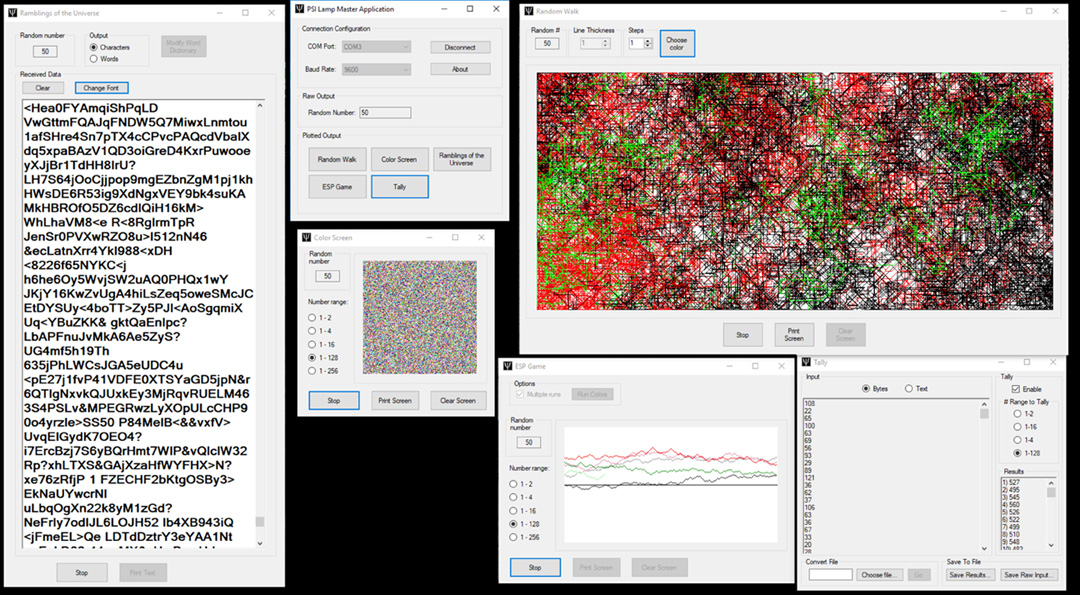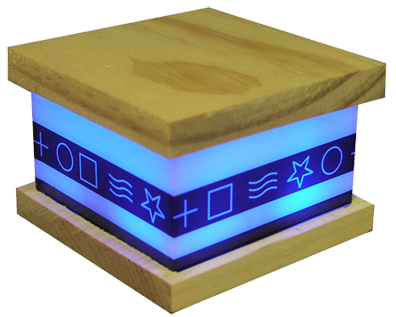Free PSI Testing Software

What Makes the PSI Science Lamp Special?
The PSI Science Lamp PSI-01 is built around a laboratory-quality random number generator (powered by a Geiger counter). It provides a unique way to study and test psychokinesis (PK), precognition, telepathy, and more. Each time the lamp’s Geiger counter detects background radiation, it triggers a new random number (1–4). That number immediately correlates to one of four colors (blue, green, red, or yellow).
- Genuine Randomness: Radioactive decay is fundamentally unpredictable, meaning the next color truly cannot be known in advance.
- Test Multiple PSI Phenomena: Explore psychokinesis (influencing colors), telepathy (sending color cues), and precognition (predicting the next color).
- Fun & Educational: Perfect for hobbyists, students, and serious researchers looking to delve deeper into parapsychology.
- Assembled in the USA: Built with top-quality materials for durability and reliability, backed by helpful customer support.

How Does It Work?
The PSI Science Lamp detects normal background radiation using an internal Geiger counter. Each detection event triggers a random number from 1 to 4. The lamp instantly changes color to match the newly generated random number. This approach uses the immutable randomness of atomic decay, surpassing typical pseudo-random generators and diode chaos lamps.Why True Random Matters: Because atomic decay cannot be predicted, you can’t accurately guess or control the next color, making it perfect for authentic ESP/PK experiments.
PSI Science Lamp Applications
- Precognition: Try predicting the LED color before it lights.
- Psychokinesis (PK): Focus your mind to influence which color appears next.
- Telepathy: Sender and receiver test color transmissions from separate rooms.
- Fortune Telling: Assign each color a meaning and use the lamp for quick “Yes/No” questions.
- Mood Lamp: Enjoy a mesmerizing, truly unpredictable color shift—makes a great conversation piece.
Curious to learn more? Check out these resources:
PSI Strength Calculator
PK Lamp Technology & History
How Our Random Number Generator Works
Downloadable Infographic:
Pg1,
Pg2
Printable PSI Lamp Manual
Ready to Experiment?
Experience real randomness for your PSI, ESP, and PK research.
Order the PSI Science Lamp (PSI-01) for just $159.95!
PSI Science Lamp - $159.95
Watch the PSI Science Lamp in Action
Free PSI Science Testing Software
This software utilizes the random numbers generated by our PSI Science Lamps (or our Random Number Generators) and requires the included USB TTL Cable to connect your lamp to your PC.
What Can You Do With It?
- Random Walk: Creates unique random “art” based on pixel movements.
- ESP Game: A micro-psychokinesis experiment to attempt influencing a line’s path.
- Color Screen: Each random number generates a colored pixel, visualizing true randomness.
- Ramblings of the Universe: Watch random ASCII characters or phrases form unexpected text.
Interested in history the science of PSI Phenomena?
Check Resources below.
Strange Properties of Psychokinesis
Roots of PSI Research
Dean Radin, Ph.D on Quantum Physics 1 of 3
Dean Radin on Global Consciousness Project




